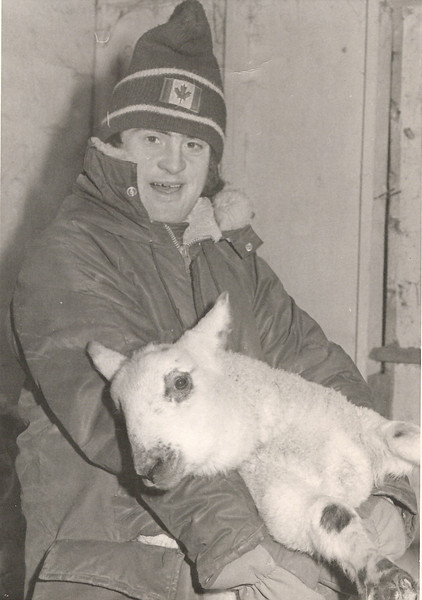
Homily for Johnny
At John’s funeral, Chris Jarvis gave the homily, based on the Gospel of John Chapter 10.
Gospel – John 10: 2 – 4, 14 – 15
How are ya? What’s up? How’s your mom? Where’s your home? Where do you come from?
Here we are, some of the sheep of John’s flock. We know these words. We know that voice. We love to listen to it. So much so that we have regularly imitated it.
It’s why for years “Johnnyisms” have begun and been interjected into so many conversations. His flock loves the sound of his voice. And so at Daybreak on any given day over the years “How are ya” has been uttered with Japanese, German, Brazilian, Korean, American, and myriad other accents and intonations. We desire to hear the shepherd. We desire to be greeted and known, to belong in the way only that voice could make us understand. It’s good to be in the flock.
John did more than just shepherd us. He called us to our sheep-ness when we thought we didn’t necessarily need tending. He helped us understand the goodness of needing the other, as well as the beauty of our own authenticity. It’s not always easy to accept our vulnerability, our interdependence. It’s hard to be the sheep sometimes.
We are gathered here on the last day of March, which is said to come in like a lion and go out…. like a lamb. March sees the unsettling darkness of winter give way to the hopeful innocence of new growth in spring. March is a time of transformation.
Think with me for a moment how you may experience this transformation within yourself. Have you ever come into a space – your office, the grocery store, a coffee shop, your own home after a long day- like a lion? Not necessarily aggressive, but with aggressions of the heart – preoccupied, unaware, impatient, walls up, masks on, judging, far away from your sense of self? We all have…it’s easy to do. And what’s worse is a room or coffee shop full of lions, a room dominated by barriers between people. It’s hard to know what to do with that room.
John knew what to do. John’s shepherding involved not only tending the lamb; he was also not scandalized by the lion.
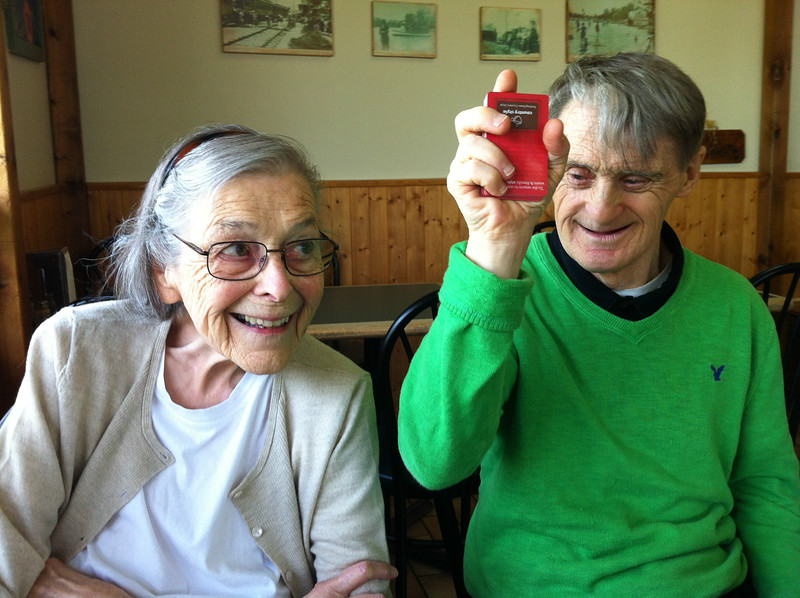
Elizabeth Buckley and John were good friends and enjoyed going out for coffee together.
Consider for a moment the wonderful scene described by Elizabeth Buckley, a longtime friend and fellow Daybreak saint now with John. In the film “Where’s Your Home,” Elizabeth spoke of John shepherding at the local Country Style coffee shop. One day with Elizabeth he came in for his usual donut and coffee to find a members of a biker gang wearing “leather and nail heads…and clanking across the floor”.
John went up to one of them, introduced himself, asked for his name, and uttered those famous words, “so, where’s your home?”
As Elizabeth says, the man was completely disarmed and went to where his roots were. The man answered with pride and gentleness as he named him hometown.
John’s gift was not just given to this man, as he sloughed off the tough layer of biker image to encounter the authenticity of John. The gift was also given to anyone else witnessing the meeting. I believe John understood that “disarmament” involves a domino effect on the hearts of everyone in the room. And so Elizabeth and others were gathered by John and opened up to the genuine moment.
That day, many went in for their coffee as lions, came out as lambs.
John shepherded with an extraordinary sense of equality. He certainly held some in his flock very close and dear – Uncle Fergie, Queen P, Louie Moore. And he could, from time to time, express disdain for certain folks – the mail person running late, airplane pilots, and certainly any medical professional. But John lived with affection for people that was unattached to status, role, or fame. He would proclaim “music tonight!” on the way to any kind of performance, whether it was the Chieftains, Lou Moore, or jamming with Clara in front of some high school kids.
As you watch John’s movie “Where’s Your Home”, note to whom he refers as “Big Guy.” He does it three times…to Sandy McIntyre (the fiddle player), to the young sales associate at Winners, and to the sheep on the farm. A lot of people and creatures can share the Big Guy moniker.
While he loved logos, his was a very non-dual approach to our consumer culture in which one brand is always trying to out sell and triumph over another. John would go for coffee to Tim Horton’s, Starbucks, Second Cup, and Country Style consecutively with equal zeal for all. He thought nothing when he happened to wear the Second Cup cap to Starbucks. There was room for it all, as long as he could simply meet people.
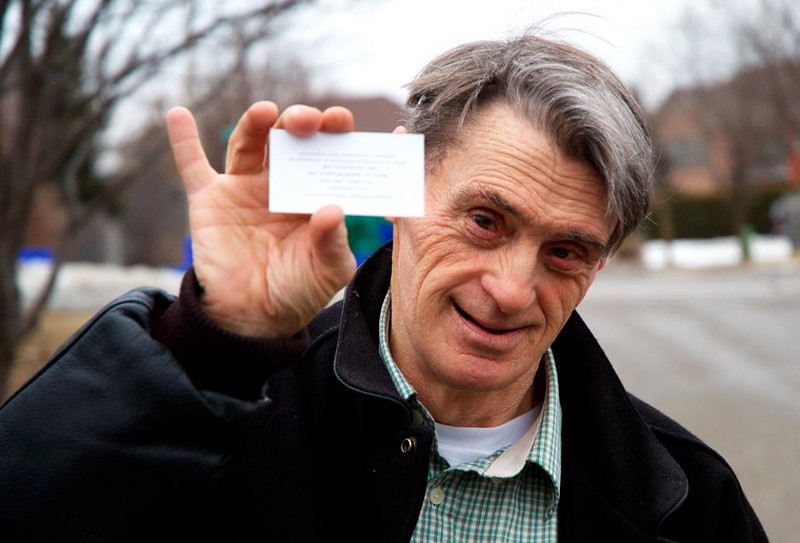
Many of us know of John’s love for business cards.
I thought once I had scored a big win for him because I found in a restaurant a wall full of business cards for the taking. After I excitedly showed him what I considered to be a goldmine, he politely declined to take even one. I realized that day that John needs to be handed a business card. Before it’s about a company or a logo…it must first be about a person. Perhaps some of you experienced the joy of John flashing your business card – the one you gave him months earlier and thought he had lost. Though he carried about 5 wallets at one time, he always seemed to know exactly where your card was.
John’s impartiality made him prophetic. The vision of peaceful co-existence about which John David read earlier from Isaiah is the fruit born of John’s approach to the world.
Like any good shepherd, John knew how and where to go home. John’s beloved New House was the place for rest, renewal, comfort, and care. As his flock at the New House changed continuously over his 40 plus years there, he never ceased to welcome new people into the fold. He took care of his housemates there with extraordinary attentiveness. Perhaps John’s greatest consistent act of faithfully shepherding came each night around the dinner table as he called each person by name to be welcomed and celebrated with applause. He could lead those he met – like the biker – to their roots because he was so securely rooted at home. He missed his home anytime he went away. Eleven years ago I had the great privilege of accompanying John and Derien to New Jersey so John could play on stage with the Chieftains. For the last 6 hours of the drive home, John was consistently on his “phone” with Lauren at the New House to make sure all was okay and to reassure them he was coming home.
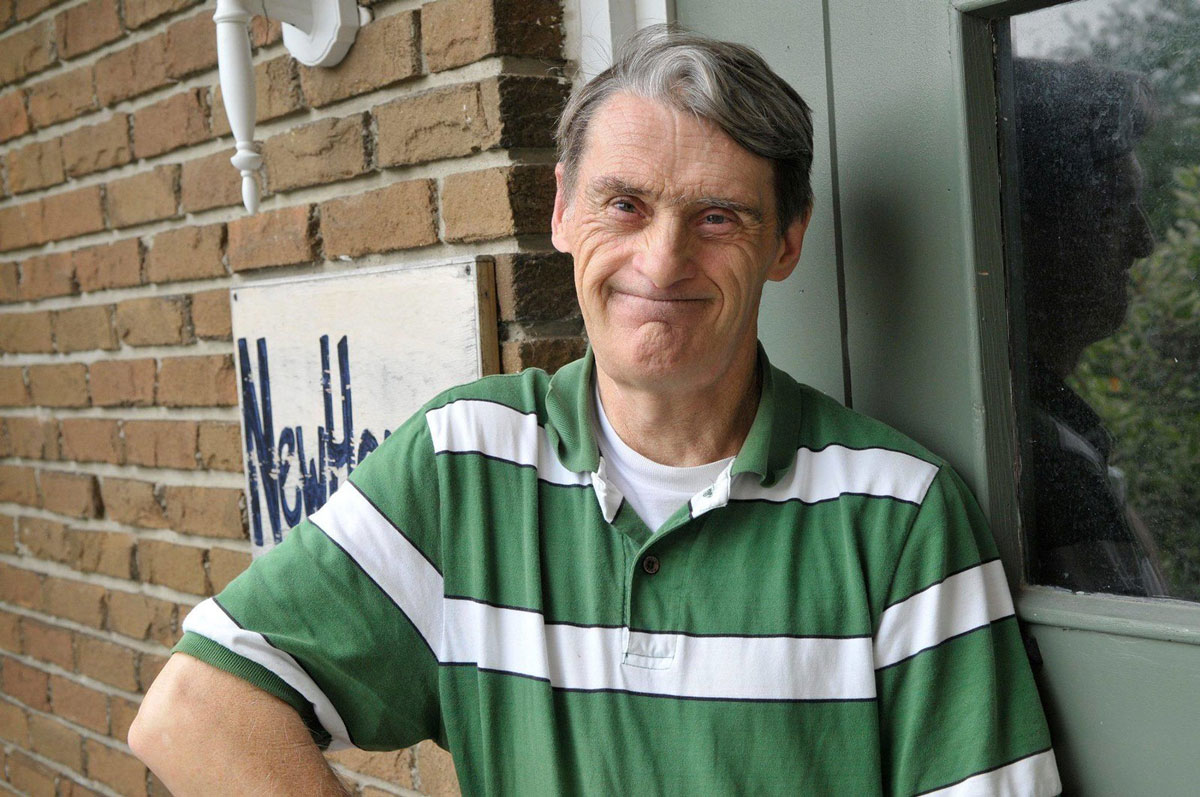
John died on March 25, 2017. Clara Fraschetti and Anne Todd gave the eulogy at John’s funeral on March 31, 2017 at St. Mary’s Anglican Church in Richmond Hill.
At home, in town, far away, communion was always at the centre of John’s vocation as shepherd. John’s communion involved active participation in “communicating life”, something Jean Vanier names as elemental to “true shepherding”. John offered his whole self to others for the common experience of the sheer goodness of life. John tended to those around him with full and utter attention and love even to his last days. In this last year, without words and much movement, John invited his roommate and all staff at the Newmarket Health Centre to the same depth of encounter that he shared with the biker years earlier. The depth of their connection radiated as they gathered around John’s body on Saturday together with John’s old friends…all members of the flock, gathered by John, in communion with each other.
Shortly we will celebrate the Eucharist – a meal of communion and thanksgiving around a shared table. While John was not a churchgoer, I invite you to this sacred time in the spirit of countless meals John shared around the table at the New House.
A few years ago, John helped me re-envision what the Eucharist means through a most profound act of communion, caring, and shepherding.
In February 2014, I had the privilege of accompanying John to Pittsburgh. We went to support his good friend Liska at her father’s funeral mass. John was beginning to slow down a bit then, his Alzheimer’s noticeably having a bigger impact on his life. He had good energy for most of the trip. The day of the funeral, we took our seat in the parish. John, as usual, dressed and moved about with great grace and gentleness. At the start of the service, he watched intently as each member of Liska’s immediate family – about 15 people – processed down the centre aisle and took their place in the front pew. The time came for the Eucharist. I was prepared to stay in the pews with John, thinking he would not go forward to receive. As the time came for our pew, he left his seat and joined the line to go to the front of the church. I followed him, surprised and not sure what to expect. We got to the front and John took the body, a wafer. He looked at it, took a small nibble, looked over at me, handed it to me and said quietly, “No, I don’t think so.”
Thrown off a bit, I stood there, wondering the best thing to do. As I fumbled, John began to celebrate his Eucharist that day. He walked straight to the family in the front row and began, one by one, to shake each person’s hand and greet them with smiles and hugs. He was deliberate and intentional. I watched with awe as this shepherd tended to his flock.
John’s Eucharist that day was not unlike the Eucharist of the church we are about to celebrate. It was an act rooted in the transmission of life and love. It was a symbol of the presence of God in our midst. It was a reminder that we most profoundly enter the Divine encounter through encounters of the flesh. It was shepherd gesture, born of love, humility, and selflessness.
Today, as we celebrate this liturgy with bread and wine, take some time to be aware and tend to those around you, as John did each and every day. Shake a hand, offer a loving gaze, and together with John let us be present to one another around this table.
Johnny, our shepherd, you go ahead of us now.
May we continue to hear and know your voice, calling us by name, leading us home.
Amen

